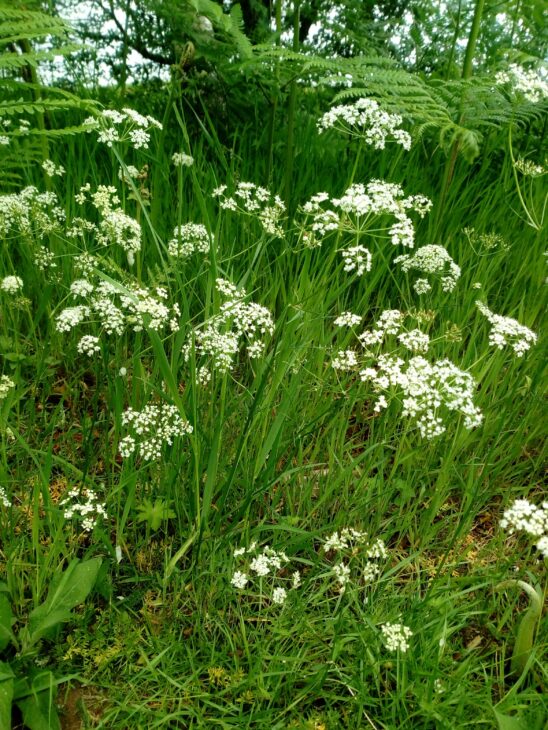Small is beautiful
,

As we move from spring into summer it’s hard to keep up with all the flowers that are appearing around the town, especially in the woodlands, meadows and along the grassy margins of the paths. As the yellows of most of our spring flowers fade, they are being replaced by nearly every colour of the rainbow – blues, pinks, purples, whites and even green – as well of course as yet more yellows.
Some of my favourites are the small, less-showy flowers that stud the turf with tiny spots of colour. Speedwells that vary from the blue of a Siamese cat’s eyes to the indigo of a darkening sky; the almost shocking lime-green of crosswort; butter-yellow tormentil, and the impossibly delicate, frothy white flowers of the pignuts.
Pignut seems such a mundane name for such a pretty flower. Like many others it was named for its use rather than its looks. While above ground its filigree leaves and creamy flower head look insubstantial, below ground it has a swollen root base the size of an acorn that tastes sweet and nutty. It’s illegal to dig them up now without the landowner’s permission, but when they were much more common children used to dig them up for a snack, and before that they were used as a famine food. I’m guessing pigs were partial to rootling them out as well.
The flowers and seeds of the plant itself have their own foodie fans. We’ll soon be seeing the small dark shapes of chimney sweeper moths skittering around in the grass, looking for a mate. Their food plant – the one the caterpillars eat – is pignut, and once they’ve found the right partner they’ll lay their eggs on the plant so that their offspring have a meal on the doorstep as soon as they hatch. Unlike most moths they fly during the day, the pale edges of their speckled, chocolaty wings catching the light. As pretty as any butterfly, they are another of those small, unobtrusive wild things that once noticed make a walk just that bit better.
